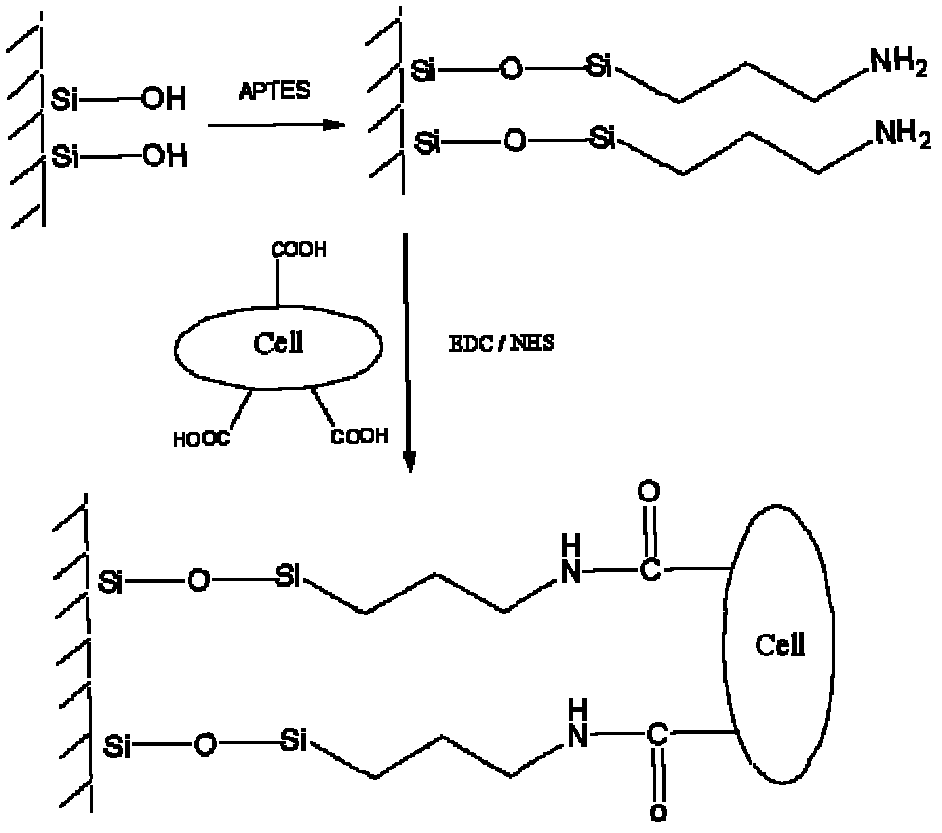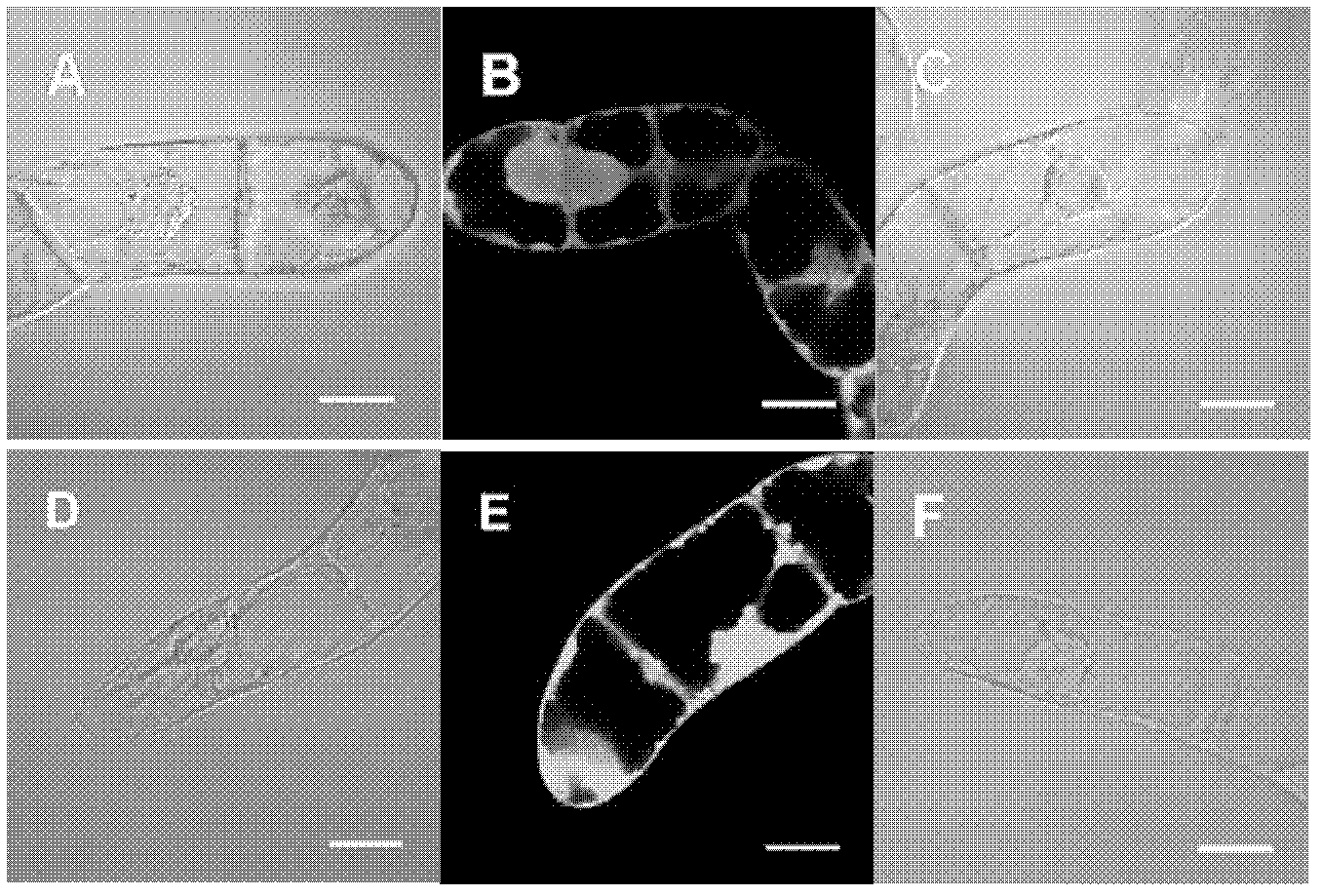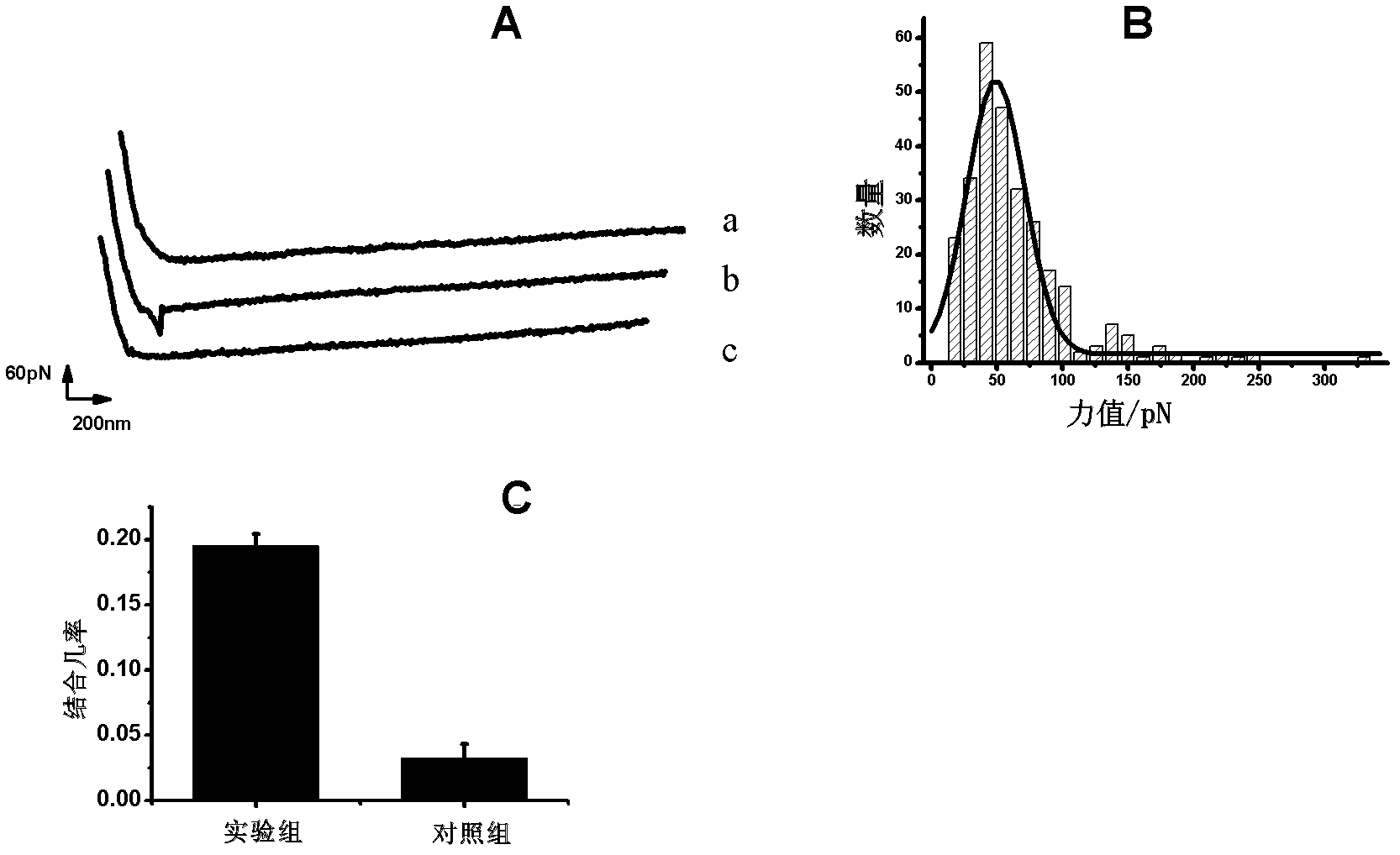Immobilized modification method for plant suspension cells
A technique of suspending cells and activators, applied in biochemical equipment and methods, measurement/inspection of microorganisms, immobilization on or in inorganic carriers, etc., which can solve the problem of poor adherence effect, large force, and difficulty in real-time reflection The true state of cell structure and function, etc.
- Summary
- Abstract
- Description
- Claims
- Application Information
AI Technical Summary
Problems solved by technology
Method used
Image
Examples
Embodiment 1
[0061] Example 1. Obtainment and application of plant suspension cells fixed and cross-linked to the substrate
[0062] 1. Obtaining plant suspension cells immobilized and cross-linked to the substrate
[0063] 1. Activate plant cells and activate substrate materials
[0064] 1) Activate plant suspension cells
[0065] (1) Take 1 ml of tobacco suspension cells (Nicotiana tobaccocum L. cv. Bright Yellow, BY-2) in good growth state, and add it to an Erlenmeyer flask containing 20 ml of medium. Protected from light and placed in a shaker at 26°C with a rotation speed of 120rpm, cultured for 3 days to obtain a BY-2 cell solution (which can be used as a growing BY-2 cell for later experiments, wherein the concentration of BY-2 cells is 2.36×10 3 pieces / ml.
[0066] (2) Take 4ml of BY-2 cells in step (1), transfer to a 15ml centrifuge tube, let it settle to remove the supernatant, then add 2ml of culture medium, gently pipette evenly, and transfer to a 60mm culture dish; Then we...
Embodiment 2
[0093] Example 2, the acquisition of plant suspension cell protoplasts fixed to the substrate by cross-linking
[0094] According to the same method and steps as 1-2 of step 1 of Example 1, the plant suspension cells were immobilized and modified, and only the BY-2 cells used were replaced with the protoplasts of BY-2 cells to obtain the fixed on the glass. BY-2 protoplasts (glass slides immobilized with BY-2 protoplasts).
[0095] The BY-2 protoplasts fixed on the glass (glass slides with BY-2 protoplasts fixed) were detected in step 1 of Example 1, and the normal growing protoplasts were used as contrast;
[0096] The result is as Figure 4 As shown, A, B, and C are BY-2 protoplasts growing in suspension, and D, E, and F are images of BY-2 protoplasts fixed on glass. Among them, A and D are the bright field images of the negative control, B and E are the fluorescence images stained by FDA, and C and F are the superimposed images of the bright field images and the fluoresce...
PUM
 Login to View More
Login to View More Abstract
Description
Claims
Application Information
 Login to View More
Login to View More - Generate Ideas
- Intellectual Property
- Life Sciences
- Materials
- Tech Scout
- Unparalleled Data Quality
- Higher Quality Content
- 60% Fewer Hallucinations
Browse by: Latest US Patents, China's latest patents, Technical Efficacy Thesaurus, Application Domain, Technology Topic, Popular Technical Reports.
© 2025 PatSnap. All rights reserved.Legal|Privacy policy|Modern Slavery Act Transparency Statement|Sitemap|About US| Contact US: help@patsnap.com



